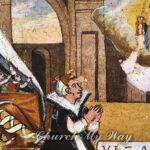Hair of the Child Messiah: Uncovering the Mystery of What Jesus Looked Like and What His Hair Symbolized
The hair of the child messiah has been a subject of fascination and speculation for centuries. From the biblical accounts of Jesus’ birth to the many artistic depictions of him throughout history, his hair has taken on multiple meanings and interpretations. But what can this enigmatic feature tell us about the cultural, historical, and spiritual context of Jesus’ life and teachings? In this article, we delve into the fascinating world of biblical scholarship, art, and culture to unlock the mysteries of the hair of the child messiah and shed light on the many ways in which it has shaped our understanding of this timeless figure.
The Significance of Hair in Religious and Cultural Traditions
- Hair is a symbol of power, identity, and spirituality in many cultures and religions
- The importance of hair in Jewish and Christian traditions, and its role in stories of prophets and saints
- The meaning of “the hair of the child messiah” in religious texts and folklore
Hair has played a prominent role in many cultures and religions throughout history, serving as a symbol of power, identity, and spirituality. In ancient Egypt, for example, shaving one’s head was a sign of mourning or submission, while long hair was a mark of nobility or divinity. In Hinduism, hair is seen as a physical manifestation of one’s spiritual energy and is often worn long and uncut as a symbol of devotion. Similarly, in many Jewish and Christian traditions, hair has been associated with concepts such as purity, strength, and holiness.
The phrase “the hair of the child messiah” appears in some religious texts and folklore, suggesting that Jesus’ hair may have had special significance even from a young age. By exploring the cultural and religious context of hair, we can gain a deeper understanding of its role in our lives and traditions.
According to the Gospel of Matthew, the birth of Jesus was accompanied by the appearance of a bright star in the sky, which led the Magi, or Wise Men, to travel from the east to find the infant. In some depictions of the Nativity, the star is shown hovering over the manger where Jesus lies, illuminating his face and hair. This imagery has become a powerful symbol of the divine nature of Jesus and the miracle of his birth.
However, some scholars have suggested that the star of Bethlehem may not have been a literal astronomical event, but rather a metaphorical or symbolic representation of Jesus’ significance. For example, some have argued that the star may have been a prophetic sign that foretold the coming of a great king or messiah, while others have suggested that it may have been a manifestation of divine light or radiance that accompanied the birth of Jesus.
The portrayal of Jesus with long hair has been a topic of controversy throughout history, with some religious and cultural traditions emphasizing the importance of modesty and gender roles. For example, in the early Christian church, it was common for men to have short hair and for women to cover their heads in church as a sign of respect and submission. However, the image of Jesus with flowing locks has persisted in many artistic and cultural representations, including Renaissance paintings, Hollywood films, and even heavy metal music.
Some scholars have suggested that the long hair may have been a sign of Jesus’ devotion to God and his rejection of worldly vanity, while others have argued that it may have been a cultural or regional fashion choice. It is worth noting that depictions of Jesus with short hair also exist in some traditions and that his appearance would likely have varied depending on factors such as age, health, and social status. Nonetheless, the image of Jesus with long, flowing hair continues to capture the imagination and inspire a sense of awe and wonder.
The Cultural Significance of Hair in Ancient Israel
- In ancient Israel, hair was an important symbol of identity, status, and religious devotion. For example, the Nazirite vow, which is described in the book of Numbers, required a person to abstain from cutting their hair as a sign of their dedication to God.
- Some scholars have suggested that the long hair of the child messiah may have been a deliberate allusion to the Nazirite vow and that it may have been intended to convey a sense of purity and holiness.
- The importance of hair in ancient Israel can also be seen in the story of Samson, who was said to possess supernatural strength as long as he did not cut his hair. When Delilah betrayed him by cutting his hair, he lost his strength and was captured by his enemies.
What the Bible Tells Us About Jesus’ Hair
- Descriptions of Jesus’ appearance in the Bible and other ancient texts
- Interpretations of these descriptions by scholars and theologians
- The significance of Jesus’ hair in depictions of him in Christian art and iconography
Descriptions of Jesus’ appearance in the Bible are relatively sparse, but there are a few references to his hair that scholars have interpreted in different ways. For example, in the Book of Revelation, Jesus is described as having hair “white like wool, as white as snow,” which has been interpreted as a symbol of his wisdom and divinity. In the Gospel of Matthew, Jesus tells his followers not to worry about their appearance, saying “even the very hairs of your head are all numbered.”
This passage has been seen as a reassurance that God cares for each individual, even down to the smallest details of their appearance. The significance of Jesus’ hair is also reflected in depictions of him in Christian art, where he is often shown with long, flowing hair and a beard.
In addition to the passages mentioned earlier, there are a few other references to Jesus’ hair in the Bible that have been analyzed by scholars. For example, in the Gospel of Luke, Jesus is said to have been born with “soft, curly hair,” although this detail is not mentioned elsewhere. Some experts have suggested that this may have been a nod to the Jewish tradition of not cutting a child’s hair until they reach a certain age, although this is a matter of speculation.
In the Song of Solomon, there is a romantic passage in which the speaker compares the hair of his lover to a “flock of goats,” which some have interpreted as a reference to Jesus’ hair as a symbol of his love and beauty.
Scientific Research on Ancient Hair
- The emerging field of paleohistology, or the study of ancient hair samples
- Examples of hair samples from other historical figures and what they reveal about their lives and health
- The potential for studying Jesus’ hair to provide new insights into his physical appearance and cultural background
In recent years, scientists have developed new techniques for studying ancient hair samples, using them to gain insights into the lives and health of people from the past. For example, studies of hair samples from ancient Egypt have revealed details about diet, health, and even hairdressing practices.
The potential for studying Jesus’ hair is intriguing, as it could provide new information about his physical appearance, health, and cultural background. However, there are significant challenges to overcome, including the difficulty of finding reliable hair samples from the right time and place, as well as ethical and religious considerations around the handling of relics.
One of the challenges in studying ancient hair samples is that hair is not typically preserved as well as other materials, such as bones or teeth. However, recent advances in techniques such as mass spectrometry and stable isotope analysis have allowed researchers to glean more information from hair samples than ever before. For example, a study published in the Journal of Archaeological Science in 2015 analyzed hair samples from 18 individuals buried in the ancient city of Hierakonpolis in Egypt, dating back to the Naqada II period (around 3200 BCE).
The researchers found that the individuals’ diets were mostly based on local plants and animals and that their hair was often treated with plant-based oils and dyes.
Representations of Jesus in Art and Culture
- The image of Jesus with long hair has been a popular subject of artistic and cultural representation for centuries, with countless paintings, sculptures, films, and songs depicting the messiah with flowing locks.
- Some of the most famous depictions of Jesus with long hair include Leonardo da Vinci’s “Last Supper,” Michelangelo’s “David,” and Mel Gibson’s “The Passion of the Christ.”
- In addition to his physical appearance, representations of Jesus in art and culture often emphasize his compassionate and loving nature, as well as his role as a spiritual leader and savior.
Folklore and Legends About Jesus’ Hair
- Stories and myths from various cultures about the miraculous powers of Jesus’ hair
- The significance of relics such as strands of hair attributed to Jesus or other religious figures
- The role of hair in the idea of the “second coming” of the messiah in some traditions
Throughout history, there have been many stories and legends about the miraculous powers of Jesus’ hair. In some traditions, it is said that strands of his hair were able to heal the sick or other miracles. Some relics claiming to be pieces of Jesus’ hair have been preserved and venerated by various religious communities, although their authenticity is often debated.
The idea of the “second coming” of the messiah is also linked to the concept of hair, as it is believed that Jesus will return with a full head of hair and a flowing beard. While these stories may not have a scientific basis, they reflect the deep spiritual and emotional significance that hair can hold for people of faith.
One of the most famous stories about Jesus’ hair comes from the Gospel of John, in which Mary of Bethany is said to have anointed Jesus’ feet with expensive perfume made from “pure nard.” When Judas Iscariot objects to the extravagance of the gift, Jesus tells him that Mary has done a good thing, saying “You will always have the poor among you, but you will not always have me.” Some interpretations of this story suggest that the perfume was made from spikenard, an aromatic plant that was used in ancient times to anoint the hair. This has led some to speculate that Jesus may have had long, fragrant hair that was treated with luxurious oils.
The Mysteries and Controversies Surrounding Jesus’ Appearance
- The lack of a clear, definitive image of Jesus in history or scripture
- The ways in which depictions of Jesus’ appearance have been influenced by artistic and cultural factors
- The potential for exploring the topic of Jesus’ hair to shed light on broader questions of representation, identity, and faith
Despite the many depictions of Jesus that exist in art, literature, and popular culture, there is no clear consensus on what he actually looked like. This has led to ongoing debates and controversies, particularly around the issue of race and ethnicity. Some scholars argue that Jesus was likely of Middle Eastern descent, with features similar to modern-day Palestinians or Arabs. Others have suggested that he may have been of mixed or non-Jewish heritage, based on historical and cultural evidence.
The potential for exploring the topic of Jesus’ hair is just one avenue for investigating these broader questions of representation, identity, and faith, and may offer new insights into the many mysteries and controversies that surround Jesus’ life and legacy.
One of the main debates around Jesus’ appearance is whether he would have looked more like a modern-day European or a Middle Eastern person. Some critics of traditional depictions of Jesus argue that he has been “whitewashed” in Western art, with fair skin, blue eyes, and straight hair. However, this view is not supported by historical evidence, which suggests that Jesus was likely of Semitic or Arab descent. Some experts have pointed to the fact that he was raised in Galilee, a region known for its diversity and blending of cultures.
Others have argued that his appearance may have been shaped by factors such as his diet, lifestyle, and social status, which would have differed from person to person in the ancient world. Ultimately, the mystery of Jesus’ appearance remains unsolved but continues to inspire curiosity and speculation among people of all backgrounds.
Theological Interpretations of Jesus’ Appearance
- While the physical appearance of Jesus is not described in detail in the Bible, many theologians have offered their own interpretations and speculations about what he may have looked like.
- Some have suggested that Jesus may have had a more Middle Eastern appearance than the traditionally depicted Caucasian features, given his birthplace and cultural context.
- Others have focused on the spiritual significance of Jesus’ appearance, emphasizing his divine nature and the symbolism of his long hair and radiant countenance. For example, some theologians have suggested that Jesus’ hair may have represented his connection to the divine, while his glowing face may have symbolized his role as the light of the world.
Conclusion
In conclusion, the hair of the child messiah and the question of what Jesus looked like have been subjects of fascination and debate for centuries. While the Bible provides few details about Jesus’ physical appearance, his image has been shaped and reimagined by countless artists, writers, and theologians over the years. From the symbolism of the star of Bethlehem to the cultural significance of hair in ancient Israel, the depiction of Jesus with long hair has taken on multiple layers of meaning and significance throughout history. Regardless of his physical appearance, Jesus’ message of love, compassion, and salvation has touched the lives of billions of people around the world and continues to inspire and challenge us today.
References & Pictures:
- “The Birth of Jesus: Myth, History, and Christian Reflection” by Christopher Tuckett (2004)
- “What Did Jesus Look Like?” by Joan E. Taylor (2018)
- “The Image of Christ in Modern Art” by Richard Harries and Henry Martin (2013)
- “Jesus Through Middle Eastern Eyes” by Kenneth E. Bailey (2008)
- “The Historical Jesus: A Comprehensive Guide” edited by Gerd Theissen and Annette Merz (1998)
- “The Bible and Interpretation” website Bible Interpretation | Bible Interp (arizona.edu))
- Jesus – Wikipedia
These sources offer a variety of perspectives and insights on the topic, from historical and cultural analysis to theological reflection and artistic representation.









